#Dowel Function
Explore tagged Tumblr posts
Text
How Dowel Bars in Roads Differ from Those in Buildings

Dowel bars play a vital position in modern creation by means of making sure of structural continuity and load switch. These cylindrical metallic components are embedded between concrete joints to reduce strain and prevent cracking, making them critical for both heavy infrastructure and architectural improvement. Whether utilized on highways or in commercial homes, dowel bars enhance performance, amplify service existence, and ensure long-term durability — but their application varies extensively depending on the venture.
Dowel Bars in Road Construction
In the context of avenue construction, dowel bars are used by and large to switch vehicular loads from one concrete slab to the subsequent. Known as dowel bars in road engineering, those components are embedded midway throughout joints to permit adjoining slabs to transport independently while staying aligned. This reduces the possibilities of differential settlement and joint faulting, especially underneath heavy traffic. The smooth, round shape of dowel bars lets in horizontal motion because of temperature adjustments or dynamic loading, supporting pavements closing longer without vast repair.
Key Features of Dowel Bars in Roads
What sets dowel bars in road creation aside is the size and load potential they may be designed to face up to. Roads endure repetitive and extreme masses from automobiles, so dowel bars have to be precisely positioned and corrosion-resistant. HR coils are frequently used in the manufacturing of these dowel bars, giving them the power and versatility required to bear high strain. The precision inside the material’s surface end, carried out via warm-rolled processing, is a key factor that guarantees green load switch across pavement slabs.
Dowel Bars in Building Construction
In contrast, using dowel bars in buildings serves a different motive. Here, they may be generally observed in:
Slabs
Beams
Staircases
These help in handling differential movement between structural elements. Unlike dowel bars in road initiatives, which emphasize longitudinal strain handling, building dowels are extra centered on anchorage, shear resistance, and stability among related additives.
Placement Differences: Road vs. Building Dowel Bars
Another principal distinction lies in the placement approach:
In buildings, dowel bars are regularly cast in during concrete pouring.
In roadwork, they are inserted between cured concrete sections.
This integrated method reduces shifting and improves bonding, especially when HR coils are used in their fabrication. The superior weldability and uniform thickness of HR coils allow for dowel bars that meet actual specifications, making sure of structural consistency at some stage in the construction.
Material Choice for Dowel Bars
Material preference plays a critical position in the effectiveness of dowel bars in each application. For high-performance outcomes:
Dowel bars crafted from HR coils are increasingly preferred by contractors.
These offer uniform cross-sectional areas and greater corrosion resistance.
The use of HR coils enables manufacturers to tailor dowel bars for specific purposes
Choosing the Right Dowel Bar for Your Project
For contractors and developers comparing reinforcement options, understanding where and how dowel bars are used can significantly impact project success. Selecting the appropriate dowel bar depends on:
The construction environment
Load conditions
Quality of material
Products made using premium HR coils offer a dependable, long-lasting solution for both infrastructure and architectural needs.
Conclusion: Key Differences and Material Awareness
The difference between dowel bars in road systems and those in buildings is more than technical — it's foundational. Choosing the right kind requires insight into structural behavior, load impact, and environmental exposure. For road projects handling repetitive stress and traffic, strong dowel bars in road applications ensure durability and stability. In building construction, properly embedded dowel bars ensure smooth load transfer and reduced cracking between concrete elements. Dowel bars manufactured using HR coils offer reliable, performance-driven solutions for diverse applications.
#Dowel Bars#Road Dowel Bars#Building Dowel Bars#Dowel Bar Use#Concrete Dowel#Dowel in Roads#Dowel in Slabs#Dowel Function#Load Transfer Bar#Dowel Steel Bar#Dowel Bar Size#Dowel Bar Gap#Road Joint Bars#Dowel Placement#Dowel vs Tie#Dowel Types#RCC Dowel Bars#Pavement Dowel#Slab Dowel Bars#Dowel Bar Specs
0 notes
Text
What Are Dowel Bars and Why Do Builders Use Them?

Dowel bars represent one of the most essential yet often unnoticed additives in present-day creation. These specialized metallic reinforcement elements serve as crucial load transfer gadgets in concrete pavements, slabs, and structures. When properly mounted, these unassuming steel rods significantly decorate structural integrity and amplify the lifespan of concrete installations throughout residential, commercial, and infrastructure projects.
Functionality of Bar Dowels The construction industry is based closely on those cylindrical metal elements to create stronger connections among adjoining concrete segments. A traditional bar dowel includes easy, round metallic that permits mild horizontal movement even as it prevents vertical displacement among concrete sections. This apparently easy function will become critical in preventing not unusual concrete screw-ups like cracking, faulting, and untimely deterioration that plague poorly designed systems.
Thermal Stress and Flexibility Concrete naturally expands and contracts with temperature adjustments, creating pressure that could cause cracking and structural issues. Bar dowel installations mitigate those issues by way of allowing adjacent concrete sections to transport horizontally while keeping vertical alignment. This managed flexibility proves specifically critical in roadways, business floors, and outdoor concrete packages in which temperature fluctuations and heavy masses create regular strain on the shape.
Quality and Manufacturing Considerations Quality subjects notably while selecting those components. Leading TMT bar manufacturers produce dowel bars that meet rigorous engineering specs for power, dimensional accuracy, and corrosion resistance. These specialized metal elements undergo precise production approaches to make sure they deliver constant performance underneath worrying conditions. The distinction between premium and substandard products becomes evident over the years as systems face the test of environmental stressors and continuous usage.
Installation Advancements Installation techniques for bar dowel systems have evolved considerably. Modern strategies encompass dowel bar baskets that make certain best alignment earlier than concrete pouring and dowel bar retrofitting for existing pavements with deteriorating joints. These advanced strategies maximize the effectiveness of the weight switch gadget and enlarge pavement lifespan drastically in comparison to non-doweled alternatives.
Economic and Performance Benefits The financial blessings of nicely implemented dowel bars increase a ways beyond their initial price. By dispensing loads more successfully throughout concrete sections, these factors reduce preservation requirements and prevent premature disasters. Many TMT bar producers now provide specialized coatings and substances that, in addition to decorating sturdiness and performance, make those additives even more greatly treasured in difficult environments wherein moisture or chemical exposure threatens steel integrity.
Application in Large-Scale Infrastructure For infrastructure projects like highways and airport runways, particularly engineered bar dowel systems have come to be widespread exercises amongst forward-thinking groups and contractors. These essential additives permit heavy automobiles to transition easily throughout concrete joints without developing the uncomfortable bumps drivers experience on poorly built roadways.
Choosing the Right Dowel Bars Builders should consider numerous elements while deciding on dowel bars: diameter, length, spacing, cloth grade, and defensive coatings all impact overall performance. Premium products from installed TMT bar producers typically feature consistent dimensional tolerances, suitable strength traits, and defensive remedies that save you from corrosion and binding.
Innovation in Dowel Design The production panorama continues evolving, with innovative bar dowel designs addressing specific utility-demanding situations. Square, elliptical, and plate dowels have emerged along with traditional spherical options, each imparting specific blessings for unique eventualities. Regardless of design variations, the fundamental purpose stays regular: growing powerful load switches while accommodating movement among concrete sections.
Conclusion Understanding dowel bars and their essential role in concrete production empowers challenge planners to make informed selections that beautify structural overall performance and toughness. By choosing suitable structures from legitimate providers and ensuring proper installation techniques, developers can drastically improve concrete's overall performance while lowering lifetime renovation fees—turning in higher prices for customers and growing greater sustainable infrastructure for communities.
#Dowel Bars#Concrete Bars#Steel Dowels#Road Joints#Joint Stability#Load Transfer#Bar Placement#Rebar vs Dowel#Dowel Uses#PCC Joints#Concrete Tips#Dowel Purpose#Dowel in Roads#Slab Dowels#Dowel Function#Bar Spacing#Steel Rods#Slab Cracks#Dowel Role#Joint Design
0 notes
Text
Back in 2020, I animated this 2D test while in pre-production for @whittlewoodshop and @nathan.engelhardt ‘s short film, “Forevergreen”, to experiment with how a wood carving could move in animation.
Based on @whittlewoodshop wood sculptures and Jin Kim’s drawings, this test was used to figure out details like how the wooden dowel eye would function in animation and how the bear sculpture design would stand up-right. On top of all the technical, I was having fun animating and discovering the cub’s personality. :)
To view Jin Kim’s character designs and more amazing behind the scenes, check out @forevergreen_short_film on Instagram every Friday for “Forevergreen Fridays”.
724 notes
·
View notes
Text
Blanket and Tea | Kate Bishop x fem!reader

Pairings: Kate x reader (romantic)
Type of fic: Comfort, Fluff
Warnings: Sickness
Summary: Working from home today you decide to get it over with while Kate is putting together a furniture, but when Kate notices somethin off about you she doesn’t let it get worse.
Ps: This is a bit shorter as I only came up with this in a bus so spare me, thank you
———————
The soft creak of a power drill and the occasional thud of wood echoed through the apartment, pulling you from your slumber. Rubbing your eyes, you shuffled out of the bedroom, the oversized hoodie you’d slept in hanging loosely over your frame.
The sight that greeted you in the living room made you smile. Kate Bishop, already dressed in her usual mix of casual and functional clothes, was crouched on the floor, wrestling with pieces of a half-assembled closet. A manual lay open on the floor nearby, though it seemed mostly ignored.
“Good morning,” you said, voice still laced with sleep as you padded over to her.
Kate glanced up, her face lighting up as she saw you. “Morning, sleepyhead.” She sat back on her heels, gesturing to the half-built furniture. “I’m almost done.”
“Need help?” you offered, kneeling beside her.
Kate shook her head. “Nah, I’ve got it. You should get yourself some breakfast.”
You arched an eyebrow but didn’t argue, standing back up. “Alright, if you say so.”
As you wandered into the kitchen, you could hear Kate muttering to herself about screws and dowels. You grabbed some toast and tea, sitting down at the small dining table where you could still see her.
“So, what inspired you to start this so early?” you teased, taking a bite of your toast.
Kate shrugged, not looking up from her work. “The box has been staring at me for a week. It was time to put it out of its misery.”
You laughed, sipping your tea as you kept up the light banter. By the time you finished breakfast, Kate was tightening the last screws. You grabbed your work files—notes on a case you’d been reviewing for your job as a private investigator—and began flipping through them, occasionally throwing in a comment to keep the conversation going.
As the morning went on, you started to feel a bit off. Your head was heavy, and your body ached faintly. Deciding a blanket and tea might help, you excused yourself.
“Everything okay?” Kate asked, immediately alert.
“Yeah, just grabbing a blanket and some more tea,” you reassured her with a small smile.
Kate’s eyes narrowed slightly, but she nodded, setting the closet into a stable position before standing up. “You sure?”
“I’m fine, promise,” you said, brushing it off.
She hesitated for a moment before letting you go. You returned a few minutes later, wrapped in your blanket and holding your tea, settling back into your chair. Kate cast you the occasional concerned glance but didn’t say anything.
An hour passed, and the files you were working on blurred together as your grogginess grew. Kate, now finished with the closet and tidying up, noticed you slumping further into your chair.
“Alright, that’s it,” Kate said, walking over and gently tugging the files from your hands.
“Kate—”
Before you could protest further, she bent down and scooped you up in her arms, blanket and all, cradling you against her chest in a bridal style.
“Kate!” you yelped, though your voice was weak, and you made no real attempt to resist.
“Shush,” she said softly, pressing a kiss to your temple. “You’re not feeling well. Bed, now.”
You mumbled something about being fine, but Kate wasn’t having it. She carried you back to the bedroom, laying you down with care. She tucked the blanket snugly around you, brushing a strand of hair from your face.
“Stay here and rest,” she murmured, her voice low and soothing.
You sighed, already half-asleep, but not before managing a quiet, “You’re so stubborn.”
Kate smiled, leaning down to kiss your cheek. “Always.”
She stayed with you until your breathing evened out, her fingers gently tracing soothing patterns on your arm. As you drifted off, the last thing you felt was the warmth of her presence, a sense of comfort settling over you like a second blanket.
#imagine#kate bishop x reader#mcu kate bishop#kate x reader#kate bishop x female reader#kate bishop x you#wlw#hawkeye series
67 notes
·
View notes
Text
I have dishonored my ancestors beyond comprehension with this frivolous accessory.
(page 1349-1358; LOWAS walkaround)


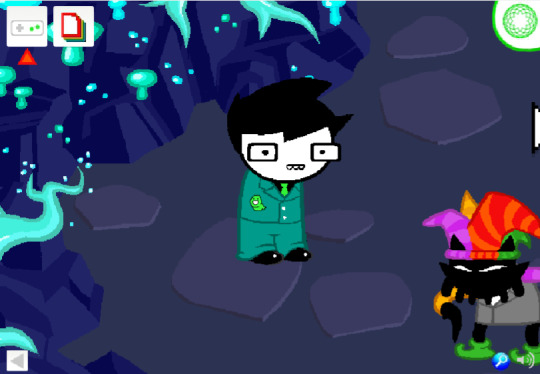
JOHN EGBERT IS BACK. HE’S HERE!!!! Damn it is good to see him. His goofy face and glasses and his cool green slime suit appearing on my screen at the start of Act 4 was such a pleasure and a delight. To be honest I would’ve loved a day or two between the end of the Intermission and the start of Act 4. I am so excited to see John again as well as getting a bunch of new land and lore to explore that it’s super hard to concentrate on both things. The end of the intermission is pretty huge too so one thing at a time.


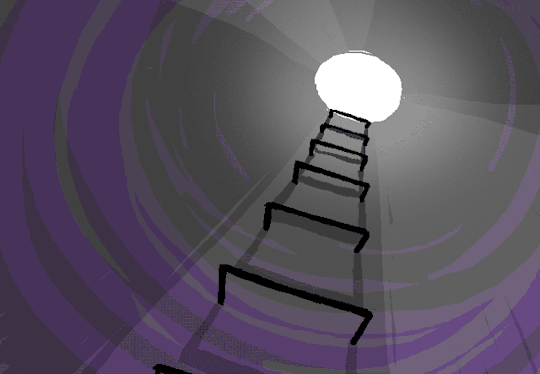





End Intermission
Beneath the barcode scanner door to English’s vault is a bunker of the kind WV and PM have flown to Jade’s island, complete with a command terminal and some similar establishing shots. For sure this is the bunker that Slick (then the Scurrilous Straggler) hung out in when he first arrived in this wasteland, sending commands to a Sburb player who brought about the apocalypse on this pink and green planet. Slick had a similar city building instinct to WV and succeeded in building this town – it’s uncertain whether he used the bunker’s homing function, but that may be how he met up with the rest of the Midnight Crew and Snowman. The Felt’s species and origin remain unknown. For some reason, Lord English – who still has not been seen now the intermission has ended – wanted to cut off this communication. The terminal allows for communication through time (interesting, considering Slick’s distaste for time based powers) so possibly English was researching this as a way to enhance his or his gang’s own powers?
Slick’s command terminal has twelve windows, in place of WV’s four. On page 1355, we see a Creature of some description – a sprite in the same style as the kids, with pale gray skin, yellow eyes and horns, fangs, and a black shirt with a gray symbol. Behind them floats a pincered, crablike sprite(?). They have a gray cruxite dowel and two black captchalogue cards, and there are purple clouds in the window behind them in the same twelve-square pattern as the monitor.
Barring any major twists I think this is probably carcinoGeneticist, a troll Jade talked to on page 859. They write in gray text, with text color often matching cruxite and/or shirt symbol, and the ‘carcino-’ prefix can refer to either crabs or the astrological sign Cancer, which is their shirt symbol. That’s my star sign also so I’m pretty excited about this little guy, even if he sounded like a jackass while trolling Jade and looks really angry with those fangs.
It seems like Trollslum is another intermission in the Midnight Crew MS Paint Adventure that the beta kids are reading? And therefore possibly a future intermission for actual Homestuck? I’m not sure but these pages set up a fun parallel for carcinoGeneticist and John Egbert, in addition to the ‘weird scientist’ format of both their chumhandles. This intermission did a pretty good job of introducing the Felt and giving them distinct appearances and powers despite their large numbers, so I can imagine a future intermission doing this with twelve trolls, and I’m curious what type of genre the story would slip into for them.
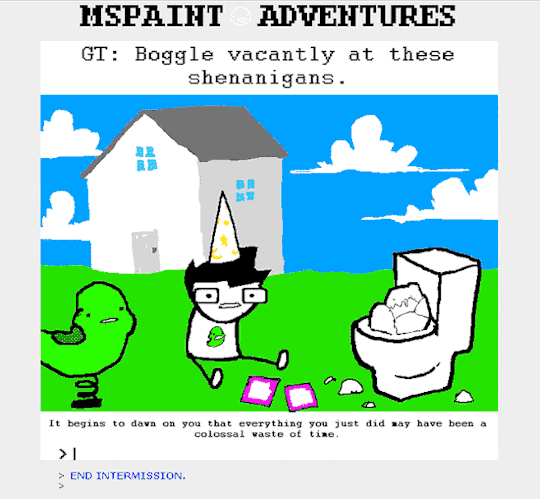
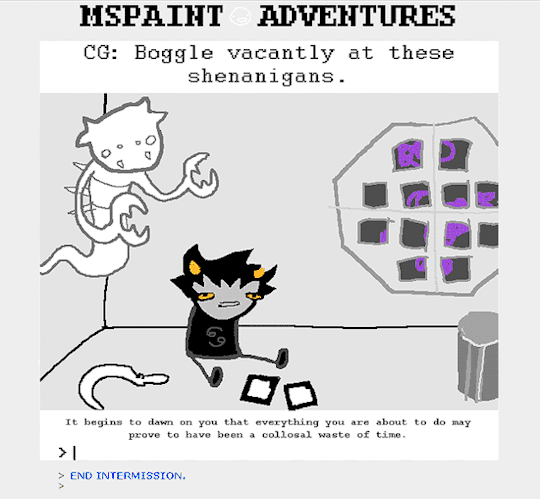


ACT 4
We are dropped into Act 4 with no time to prepare; I have been asking for it, but when the moment came I was not prepared. John has passed through the First Gate, which has portaled him down to the Land of Wind and Shade (!), a planet (!!) ‘where the constellations dance beneath the clouds’ (p.885) (!!!) populated by yellow salamanders (!!!!) who have an extensive mail system (!!!!!) which we the reader get to walk around in and explore (!!!!!!). This mirrors ‘YOU THERE. BOY’ (p.253) where we also get to take over as John after he enters a new area of Sburb.
As previously established John Egbert has probably spent his whole life in western Washington, primarily the suburbs. We don’t know if his family even took vacations. This could be the first other place John has ever been, and it is mystical and magical, glowing blue mushrooms and trees (which look kind of like cruxite!!) surrounding him like some sort of bioluminescent cave video game level. After the day John’s had this place is kind of peaceful when he can find a quiet spot away from the imps. What an absolute dream come true to come to a land this beautiful and get to hang out with such cool, friendly locals. I’m personally delighted by all the visuals on this page, and I’m excited for John to keep exploring LOWAS just so I can see more of it.
John in this panel acts very confused and uncertain about his situation, relying on Nanna’s guidance a lot more than he did while in his house, and nervous around the salamanders (personally, I would be thrilled to meet a secret wizard and behold his robes). That’s definitely a John trait but we don’t get to see so much of his whimsy, stubbornness, problem solving, movie recreations, etc, probably because of the format, which makes me glad this is a single panel. I loved playing through this but wouldn’t want the whole story told in this format.
I’m very grateful for the map linked below the panel, to make sure I’ve explored every corner. I did not 100% Gate 1 because combat is fairly slow and not especially engaging, but the concept is super cool and the programming is impressive. Compared to a video game it feels clunky to play (I got trapped in an endless loop of ejecting and re-captchaloguing items in my sylladex), but as part of a webcomic it’s honestly radical. I feel like I’ve read enough other webcomics at this point to understand how far this is pushing beyond what other authors are doing, and how efficiently this is giving miles of exposition where other comics might take weeks to deliver all this lore (or a handful of wall-of-text comics that readers would complain about).
This panel is PACKED with exposition, from the long distance John and Nanna conversations, and the insights from salamanders. Just like ‘[S] Enter’, this feels like a way to move the story on as quickly as possible. Some of the expository lines do feel clunky, but when it’s paired with the cool visuals and presented in such a novel way, it doesn’t bother me, and I’m sure I’ll reference this page loads just like Nannasprite’s previous exposition. Here are some of the most important things we learn, in my opinion:
John is definitely the Heir of Breath. The Heir’s arrival has long been prophesized among LOWAS’ indigenous creatures; the ‘wind’ in the land’s name presumably links to the ‘breath’ in John’s title.
‘Amphibious and reptilian life forms play a special role in your quest, John.’ ‘Underlings’ (presumably imps, ogres, etc) will deface any frog iconography they come across.
‘The Slumbering One’, who was awake and is now asleep, once cast a spell on the land’s fireflies to trap them within the clouds, much like the trapped firefly WV already rescued from a nugget of amber (p.749).
‘The Slumbering One’ also ‘commissioned’ the underlings (hired them? had them created?) and caused some sort of environmental damage using ‘sludge’, which the salamanders are not happy about.
The mail system is an extremely important part of life on LOWAS to the point of being sacred.
The Second Gate is ‘hidden somewhere in the Land’, although it also might be visible above John’s house (p.251), so there could be multiple possible routes for progression(?)
Jaspersprite’s prototyping has affected the imps on John’s land, who have tentacle, princess and cat characteristics, as well as the imps Rose will fight.
Nannasprite knows that Rose has entered the Medium (and what she looks like).
And most important of all, one salamander essentially gives John a major game quest:
‘The spell I'm sure you've heard from a reliable source cannot be broken unless The Slumbering One is first woken up, and then slain. Then the Breeze will again flow through the Pipes and the Fireflies will be released and allowed to go home. But I do not envy the adventurers who will presumably take on this responsibility!’
Clicking John gives the command ‘I am told your name is John. Is that correct?’, which is closer to the Wayward Vagabond’s ‘BOY WHO IS JOHN. DO AS I SAY’ (p.253) than to the regular player’s ‘John: Action’ command format. So this could indicate that a different future construct is talking to John – possibly the Peregrine Mendicant, because this land is very focused on the mail.
And I LOVE the mail system; it might be my favorite thing about this land. I personally looked in a whole bunch of parcel pyxis, and found several rocks, a shoe, a couple of minitablets, a chunk of amber (firefly not included), a cool frog, and best of all, a jar of bugs. I will guard this jar of bugs with my whole life. The carved minitablets moving through the pipes as a system of trade is very fun worldbuilding.
I guess my one issue with this page is the writing of some of the salamanders. Conceptually they’re great, and I love how their distinct personalities and roles within the culture come through – some are really communicative, while others are unhelpful, some have jobs in the society like mushroom farming, some are entrepreneurial (I would sell my suit to a salamander for 1 Boondollar if it was allowed) and some are outcasts (Crumplehat dishonoring their ancestors). Genuinely I think Hussie did a great job quickly showing a diverse society and hinting at its power structures and politics, but they are SO annoyingly selfconscious about making a fantasy society and it kind of makes me want to punch them? Like I’m okay with some nods to the audience and medium but ‘'GLUB' can basically mean anything I want it to mean. It's really cool having a bullshit language’ and ‘Maybe elders or something like that. Man I don't know. Also, isn't it funny how I'm sort of taking your existence here in stride? I'm treating it like it's no big deal’ do cross a line for me. Like it or not, this isn’t an ironic salamander society for a one off gag, this is a legitimate salamander society that’s going to form an important part of the story. That story isn’t going to be everyone’s thing but being all desperate pick-me about it isn’t going to make people take this story seriously who otherwise wouldn’t.
Anyway to finish on a positive note, getting to look up through the telescope and see John’s house feels very jarring, but also very cool. To see the primary location of the first three acts from a totally different vantage point feels like a point of no return for the story, and maybe John as a character. Hey if things get bad enough down here this kid’s gonna WISH he was homestuck.
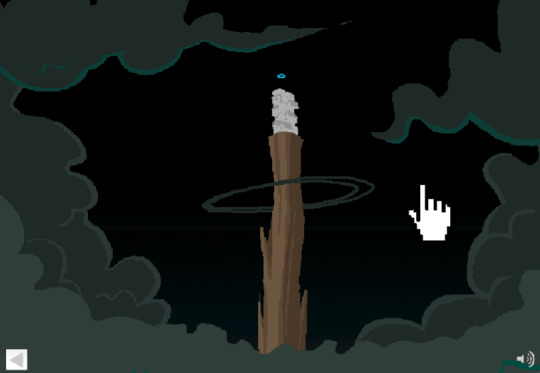
#homestuck#reaction#im SO SO SO SO excited for act 4 and i wanna devote my full attention to it#but not posting any more until i finally finish eoa3#which should be tomorrow? hopefully?#it is a very normal length post (LYING!!!!)#also we won the super bowl thank you homestuck thank you power of act 4 lowas <3#chrono
23 notes
·
View notes
Text
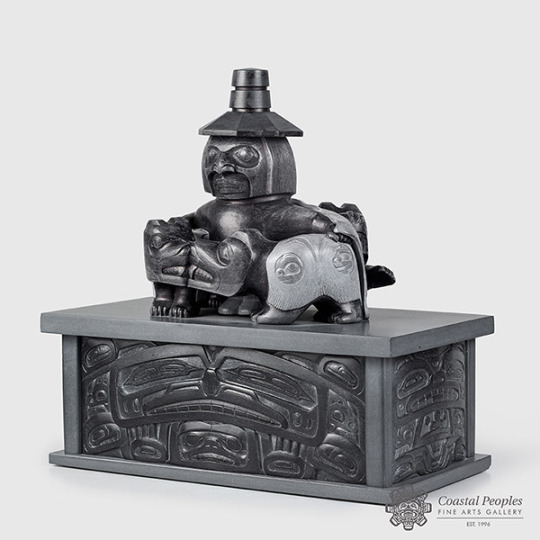
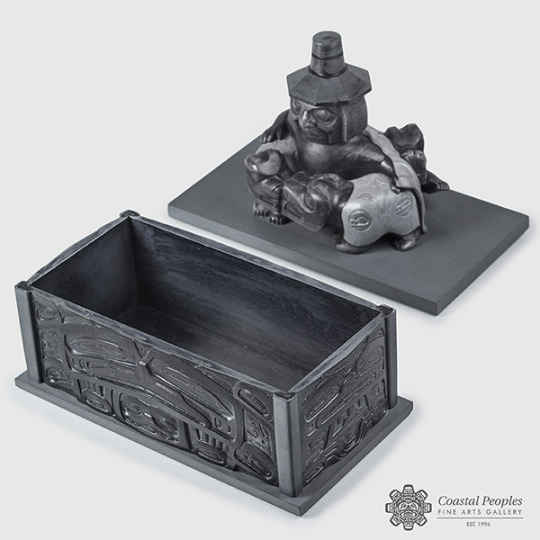
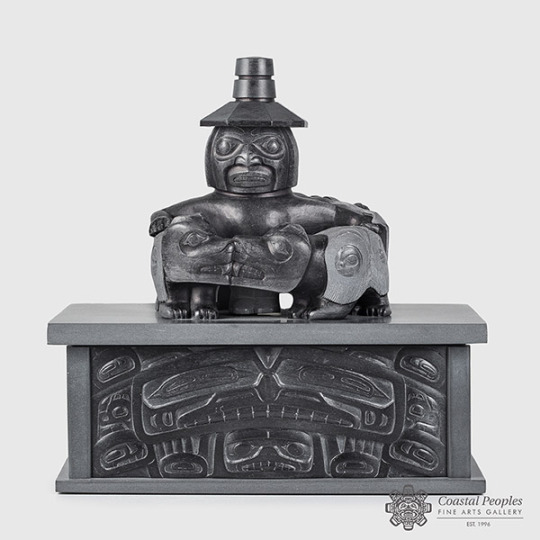

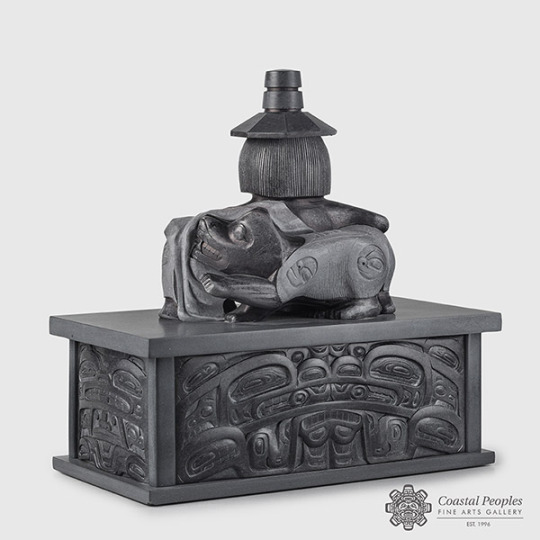
Wiigyet and the Three Bears
Charles Peter Heit
from the website: Chuck Heit’s “Wiigyet and the Three Bears” draws inspiration from a playful and poignant tale of the trickster Wiigyet and captures the story of his misadventure in pursuit of a perfect Black Bear blanket.
This remarkable sculpture, consisting of 27 individual components, brings to life the mischievous story of Wiigyet, whose longing for a new blanket leads him to three plump black bears lounging in a Cottonwood tree.
Mesmerized by the shiny, dark coats of the Bears, Wiigyet’s impromptu dance and song entice the creatures to descend. But despite the brief joy of their company, the Bears swiftly evade his grasp, leaving Wiigyet saddened and empty-handed once more.
Chuck Heit emphasizes the dynamic interaction between the physical and spiritual realms in this exceptionally executed piece. Skillfully, he depicts a Chief as the Shaman who maintains harmony between people and nature, navigates cosmic worlds, and reveals the deeply revered connection between humans, animals, and the natural world.
The carved figures on the lid reflect this spirit, with Wiigyet in a suspended pose, his feet never quite touching the ground, lifted by the playful Bears who embody the beauty of their fur as blankets adorned with tassels and designs. One of the Bears sniffs at Wiigyet’s old tattered blanket, symbolizing his failed pursuit and the lesson to respect nature’s spirits.
Crafted from “Black African Wonder Stone,” a substitute for Argillite, the piece illustrates Chuck Heit’s meticulous process and artistic prowess. Each aspect, from the fourteen silver dowels strengthening the joints to the carefully chosen designs, speaks to Heit’s dedication and mastery of carving. He shaped, reshaped, and refined the piece through numerous adjustments and trials to execute his vision to perfection.
The final work balances whimsical storytelling with traditional craftsmanship. Chuck Heit’s deep engagement with Northwest Coast culture is evident in both the narrative and the construction of Wiigyet and the Three Bears, presenting an artwork that is as meaningful as it is visually compelling. Heit’s adept blending of form and function, alongside his inventive approach, ensures the spirit of Wiigyet lives on, dancing with the Bears beneath the sheltering Cottonwood tree.
20 notes
·
View notes
Text
✨️Moondrop progress update #1✨️

Picture 1 desc/info: knowing that I'd want to make Moondrop once I finished Sundrop, I made sure that(when I remembered to, as I'm learning that i wasn't quite as 100% consistent as I hoped I was) to make traced out references of each finished carved piece so that I wouldn't waste time struggling matching both of their proportions, considering nearly every piece required a duplicate piece to help achieve the eventual 'hollow skeleton' method that I use. Also, this is what I mean when I state that theyre carved from popsicle sticks. If it works, it works. lol
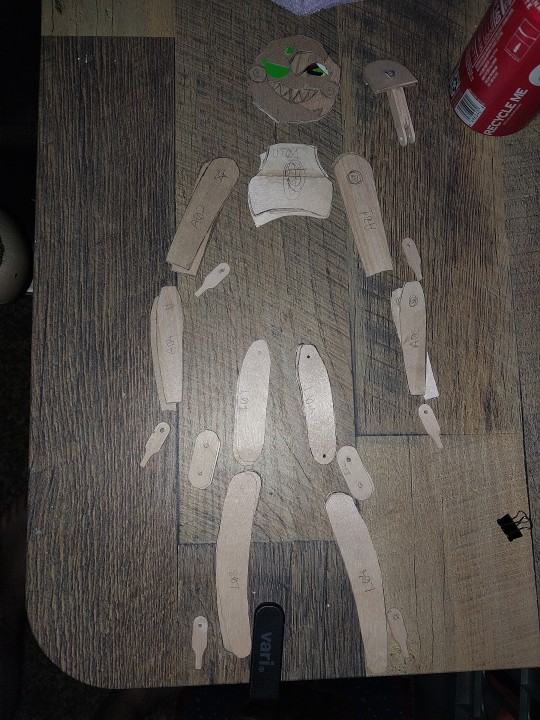
Picture 2 desc/info: here's the full lineup of every carved piece I have ready for Moondrop so far, and roughly how it will fit together. Every arm piece, leg piece, and even knee joint and the head piece have a duplicate(sans for the detail on the head's piece, obviously, though the headpiece is more complex than that as well). To further expand on why I did this, instead of just having one piece each, I need to point out the arm, hand, and ankle joint pieces. They will not be connected in two places, only one, to achieve full range of movement for the limb that they are attached to.
To achieve this, whilst still trying to keep this project's weight light, I'll create a hollowed skeleton. Essentially where the insides of the limbs(and body) are made hollow via smaller pieces of wood/popsickle stick scraps glued in-between the base pieces, but leaving enough empty space on either side to add two things. One side will have a rolled cylinder of a reinforced cardboard/paper mache combo, to provide a hollowed slot for the long joint piece side to slot into, and the other side, two hollowed holes to slot a dowel through with the joint piece inbetween. (If this doesn't make sense, dw, I plan on taking pictures when I get to that stage to show how I do it)
I also just end up stuffing the remaining 'dead-space' between the carved pieces with paper before i add clay, to further sheer off any unnecessary internal weight. Now, what you couldn't see with my Sundrop, is that by the time I finished adding clay and test stringing him together and started looking at reference photos again for color references, I hadn't realized up until that point that I'd entirely forgotten to add the dca standard wire-hook on his back. Not even superficially. So this will be where project Moondrop(whom at least uses the wire far more than sundrop, lol) will deviate from my original Sundrop design. I might use paper and cardboard to flesh out his limb shapes further before adding clay to make his body even lighter than suns, I've reinforced his torso pieces to account for the hole I'll carve into the back for my goal of a Functional wire-hook, I've made adjustments to his thigh shape for better ease of movement/posability(which might coincidentally make him just a smidgen shorter than Sun by design, shhh) because sundrops leg slots and the actual part of the leg that's supposed to slot in ended up quite a bit out of alignment due to the leg shape lacking a taper at the top to allow for a rounder end. Sundrop's legs are just a little janky bc of it.

Picture 3 desc/info: this is a look at the inbetween stage that the hip piece goes through, and you'll find that it's not reinforced with wood anywhere simply because of the completely curved surface. There were attempts made with sundrop to do this but they proved to be way too hard to bother with and less than affective with just popsickle sticks. Hense I use cardboard from a soda can box(aka cardboard that's compact and can carry a heavy capacity if the design is balanced and re-attachment points are reinforced properly) and then have so far gone over certain points with paper and glue(using the papermache method) to base reinforce places and also provide more adhesable texture internally. Because, that round piece(also cardboard) is going to sit in the main juncture of the top of the hips. A hole will be cut into it to maintain the ability to string the limbs and body together, and it will be further reinforced further with paper and glue, and later covered in clay- along with the rest of the hips inside and out, thus entirely made smaller than intended to account for the eventual bulk up of the piece. This cover provides a supportive divot in the hips that the middle torso piece can sit in that will give it the range of movement intended but also aid it in allowing the body to sit up straight otherwise(something that was discovered to be needed when working on finetuning sundrop whilst test-stringing, adding yet more weight due to the fix having been made solidly out of clay. Probably provides more support to Sundrop this way, but Moon needs to be as light as possible to prevent stress cracks/damage/balance issues/ect. If I want him to be able to have a functional hook to be used to be displayed with.
On a less technical note, there isn't much to show in the skeleton stage for the middle torso piece bc it's just a hollow cylinder of cardboard, thin enough to escape the bulk, but wide enough to still be strung through. It's just a lil tube for Sundrops frame anyway lol. Though, tbf, I might bulk Moondrops middle with paper/cardboard/whatever I decide, for the, once again, lightweight intention. I use air dry clay but even still it do be solid af when dry and sealed lol
Off camera just inches out of shot of each picture is sundrop, whom has slowly become disrobed and carefully disassembled in places to give me size references for things, but also one of these updates I'll show you how I made his head/face/ ray settup- why? Because it broke. Cuz my dumbass should've used wire and not a wooden dowel to support it all. (Further more, I'm using it as an opportunity to eventually redo Suns rays, because when I did the first set, I went for accuracy in the ray count, but still wanted them to spin freely. But I realized I HATE the gap that's left anywhere if his rays arent perfectly positioned and honestly this mechanism breaking is my sign and chance to fix it now that the rays aren't locked in anymore lol.)
I've decided to give this progress update log the tag '#projectdcadoll' from now on, so any posts I make abt this in the future will have that tag!
And if anyone has any questions about any specifics of the project, I'll also answer them/respond to them under this tag, so please feel free to ask away! I'm excited to share this process with ya'll!
#projectdcadoll#dca fandom#fnaf security breach#dca fnaf#fnaf moon#no but fr when i realized i forgot Suns hook i just about flatlined in heartbreak. im still considering giving him an artificial looking-#-one to match moon but i wont be able to until moon's is done so i can actually make em match.#tbh sun is probably light enough for a real hook but not structurably stable enough where its needed to account for the stress of movement#my boggest challenge is gonna be finding a carabiner small enough for moons hook lol
27 notes
·
View notes
Text

Bala
Malinke 19th century
The bala is a wooden xylophone that comes from the Mandé region of West Africa, which refers to the geographical shadow of the Mandé empire (1235-1469 A.D.), including present-day Mali, Senegal, Guinea, Guinea-Bissau, and the Gambia. The Mandé bala is the first instrument of Malinke jeli: a patrilineal tradition of musicians, storytellers, and singers who perform a variety of functions in Mandé society.
There are many different versions of the bala’s origin story in jeli traditions. One common thread among these many versions is the influence of Susu (also Sosso) sorcerer king Sumanguru Kante on the instrument, reflecting the significance of numulu, or blacksmiths, on the tradition. Another common thread is the symbolism of the magical bala, specifically Kante’s bala, being transferred to Bala Faseke Kouyate, the first Malinke player, which is representative of the transfer of power from blacksmiths to warriors in the thirteenth century with the birth of the Mandé empire. According to ethnomusicologist Eric Charry, this bala in the Met’s collection closely resembles the Susu Bala, the original Bala played by Kante and which has been closely guarded by the Kouyate family in Niagassola, Guinea, for generations (2000: 144).
Each of the bala’s slats are smoked to both petrify the wood and tune it to a precise pitch. The slats, graduated in length and tapered toward the smallest in length, are then fastened to the top of a four-sided wooden frame–a morphological detail that distinguishes it from other sub-Saharan African xylophones–with hide ropes. The hide rope that secures the slats on this bala is fastened to vertical end posts and also rests on top of and is tied to fifteen dowels that alternate with the slats. These dowels, secured to the frame, provide a structure to which fourteen gourd resonators called batolu have been attached in a zigzag arrangement. Shorter, horizontal beams on either side of the instrument are rounded outwards in order to accommodate the batolu.
A sound hole is carved into each batolu, on top of which a talingjalo, a mirliton or vibrating membrane, is placed using an adhesive made of mashed rice or bread. Talingjalo translates to spiderweb and, indeed, these mirlitons are made with the protective silk wrapped around spider egg sacs commonly found attached to rock surfaces in the region. The appearance of talingjalo on the bala connects it materially and morphologically to voice-disguisers found across sub-Saharan Africa, which more often than not use vibrating spider silk membranes over at least one end of a tube made by a variety of materials (see, for example, Balfour 1948). The Met’s musical instrument conservators have remarkably managed to preserve the original 19th century spider silk talingjalo on this bala using Japanese paper conservation techniques. Modern Mandé musical instrument builders, however, have increasingly replaced spidersilk with a more durable and accessible material—cigarette paper or plastic bags.
The wooden frame suspends the batolu above whatever surface the bala is placed on. When a slat is hit with a rubber-tipped mallet, air passes through the batolu, amplifying the slat’s tone and vibrating the talingjalo, creating a distinct buzzy timbre. Outside of the teaching context, wherein an apprentice may learn to play by sharing a bala with his teacher, the Malinke bala is performed by a single player, although several bala players may perform together at one time. With the slats arranged parallel to one another, ascending in pitch from right to left, the right hand voices the bass and tenor notes, while the left plays in the alto to soprano range of the instrument.
Broadly speaking, a bala piece begins with a short melodic introduction, in which the left and right hand typically work together to spell out a single melodic line. The right hand will then articulate the kumbengo: a rhythmic pattern, similar to a vamp, that characterizes Mandé instrumental performance, particularly on jeli instruments like the bala, kora and ngoni. The kumbengo may be varied tonally (for example, transposed a third higher), but rarely rhythmically, apart from adding or subtracting beats, over the course of a performance. The left hand will then play a series of melodic and rhythmic lines in dialogue with the kumbengo. This may include a reiteration of the melody, a variation on the melody, and a series of improvisations. A player’s virtuosity is often demonstrated by how many ways they are able to syncopate the kumbengo with their left hand while also holding it steady with the right. When Bala players perform as an ensemble, they will often recreate this structure, with one player performing the kumbengo, often in both hands, thereby producing an octave, while others syncopate the kumbengo in interlocking rhythmic patterns. (Althea SullyCole, 2022)
#metmuseum.org#bala#instrument#public domain#mali#guinea#guinea-bissau#senegambia#malinke#wood#gourd#hide#membrane#xylophone#althea sullycole#west africa#mandé region#musical instruments#africa#blm
7 notes
·
View notes
Text
plaga leon doll progress :3c
some bits of work from today, a few revisions in....

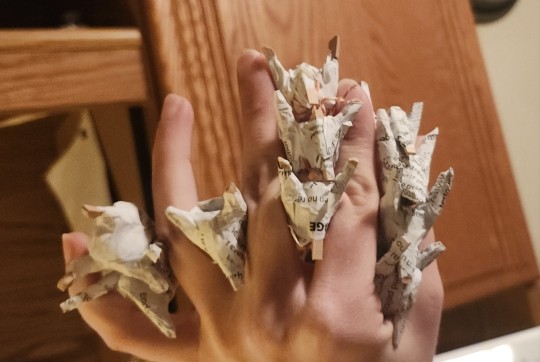

this is his tail...!
... it was too big. but, no matter. a great learning opportunity at the end of the day! ... saving this one for either a mega build (perhaps even a "plush" version) or some other art project.
in need of a functional spine, i studied anatomy a little too long to figure out how to keep the joints in place. used mini laundry clips for the pokey out bits!
this tail is loosely 18 cm long with a few vertebrae left off. each vertebrae body (minus clips) is around 1 - 1.5 cm.
so.... downscaling!

since using a smaller scale, i opted for cardboard as the pokey bits. will trim later. will also have a hell of a time cutting the pieces apart later.
the wooden dowel is 5 mm in diameter, about 15 cm long.
started this method with a different dowel, shown below as uh, above 1 cm in diameter lol.




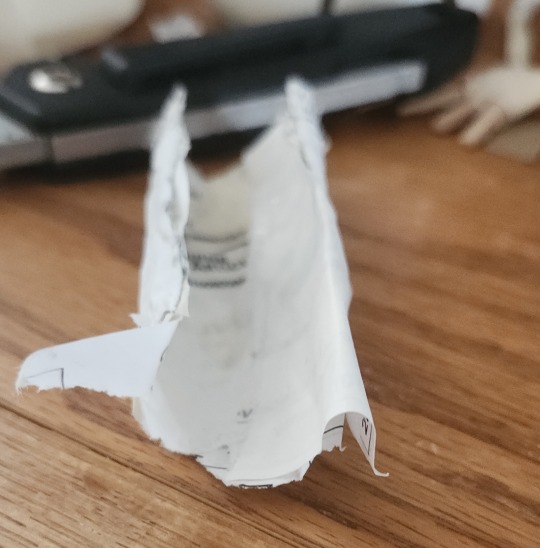
method used:
applied masking tape upside down (sticky side OUT). placed dried paper on top. and then began laying moist goopy paper over that lol.
once dried (or uh, enough to cut off the dowel), i cut it off and opened it a tad. then laid down some wet paper inside and let it dry from there. made sure to fold over the cut edges, also.
from there, i rolled to desired size and taped in place, then began the wet slop process again lol
the smaller dowel uses a similar method, but i started with dry paper first, taped it down in a few spots, and then went ahead with the (bastardized) paper mache process. (it's watered down elmer's glue)
plan from there is just give it a nice glue bath to get a good thick coating inside.
very fun, recommend!
11 notes
·
View notes
Text
How Dowel Bars in Rigid Roads Minimize Expansion Joint Failures

Dowel bars in rigid pavement function as important load transfer mechanisms that dramatically enhance the overall performance and sturdiness of concrete roadways. When properly established across expansion joints, these unassuming metallic additives prevent some of the most common pavement failures that plague transportation infrastructure projects. Understanding their role and proper installation can save significant costs and complications for road construction projects of all sizes.
The Hidden Heroes of Concrete Road Construction
Concrete roads, unlike their flexible asphalt counterparts, require careful planning to accommodate the natural expansion and contraction that occurs with temperature changes. Without proper accommodation for these movements, concrete slabs develop stress cracks, uneven surfaces, and premature deterioration.
Expansion joints allow essential movement, but they create a structural weak point unless properly reinforced. This is where dowel bars in road construction demonstrate their value.
Technical Function and Performance Benefits
When heavy vehicles approach an expansion joint, the leading concrete slab experiences downward deflection. Without dowel bars in rigid pavement, the trailing slab remains undeflected, creating a momentary lip or step at the joint. This repeated deflection difference leads to
Edge crumbling at joint faces
Pumping of subbase materials
Water infiltration issues
Progressive joint deterioration
Reduced ride quality
Properly installed dowel bars transfer approximately 40-50% of the load across the joint, significantly reducing differential deflection. This load-sharing capability maintains surface alignment while still allowing the critical horizontal movement that prevents thermal cracking.
Installation Considerations for Maximum Performance
The effectiveness of dowel bars in road construction depends heavily on proper installation practices. Key considerations include:
Alignment and Spacing
Misaligned dowel bars restrict joint movement, defeating their purpose and potentially causing worse damage than if they were absent. Specialized installation equipment helps ensure perfect horizontal alignment.
Corrosion Protection
Since dowel bars operate in harsh environments with water, salt, and constant vibration, corrosion protection is critical. Epoxy-covered and stainless-steel options provide advanced longevity despite their higher initial cost.
Diameter and Length Selection
Engineers select dowel dimensions based on pavement thickness, expected loads, and subbase conditions. Undersized dowels fail to transfer loads effectively, while oversized options waste materials without providing proportional benefits.
The Connection to Other Components
Dowel baskets secured with binding wire provide the most reliable method for ensuring proper dowel placement before concrete pouring. This binding wire must be strong enough to maintain position during the intense vibration of concrete placement but thin enough not to create weak points in the structure.
Quality binding wire resists corrosion and maintains basket integrity throughout the installation process. For projects in coastal regions or areas with frequent road salt application, stainless steel binding wire offers additional protection against premature failure.
Economic Implications of Proper Joint Design
The initial investment in quality dowel bars in rigid pavement and proper installation techniques pays substantial dividends throughout the pavement lifecycle. Research indicates that properly designed and installed dowel joints can:
Extend pavement life by 25-40%
Reduce maintenance expenses by up to 60%
Improve ride quality measurements
Minimize vehicle damage claims
The binding wire used during installation represents a minimal portion of the overall project budget but plays an outsized role in ensuring dowel effectiveness. Premium binding wire costs marginally more than standard options but significantly reduces installation problems.
Making Informed Choices
When selecting materials for rigid pavement projects, the quality and proper specification of dowel bars deserve careful attention. While material costs for premium dowel systems might increase initial budgets by 3-5%, the lifecycle cost benefits make them the economically superior choice.
For contractors and transportation departments focused on long-term performance, investing in proper dowel bars in road construction, quality binding wire, and precision installation provides the most cost-effective path to durable, high-performing concrete pavements with minimal expansion joint failures.
#dowel bars#rigid roads#expansion joints#joint failure#road joints#pavement bars#load transfer#joint cracks#bar spacing#road durability#highway joints#road cracks#bar alignment#joint support#cement roads#bar function#rigid pavement#joint design#road repair#bar benefits#4o
0 notes
Text
End-of-Year Commissions
The vast majority of my commissions menu is now unavailable until Spring 2025. What I have listed below will be available until December 1st, 2024.
Two slots are available.
Pictures are below the cut!
Decorative quilted pins and magnets - These are very mini quilts, approximately 1.5x1.5 inches in size, with a button sewn onto the back. On the button, I'll glue either a magnet for you to attach this to any magnet surface you fancy, or a pin backing so as to make it possible to wear the little quilts. Time to finish: 2-3 days
Pine tree wall hanging - 17x30 inches, this is a quilt that looks like a pine tree. It can be made using whatever prints, colors, or themes you can think of. Do you want a Halloween tree? I can do that. Black and white? That too. Pastels? Sure, why not? These are an excellent option if you have a large pin collection you want to show off, live in a home with pets or small children, your home has extremely limited space, or you really don't want to deal with a tree (artificial or real). I'll attach a hanging sleeve on the back for a dowel or curtain rod, but you can also use drapery clips and Command hooks to hold it up (it's what I do). I offer the option of including decorative pins as stated above, as well as hand-sewing buttons. Though, if you have buttons you want to feature on it as ornaments, I recommend you save yourself some money and hand sew them yourself. Buttons are very easy to attach! Time to finish: 7-10 days
Rag quilt - These are made using three layers of fabric, exposed seams, and very little time. I can finish a baby size, 30x30 to 40x40 inches, in 2-3 days. These function well as weighted blankets without the risk of injury weighted blankets can cause. My preference is three layers of flannel, and it's extremely warm. Two layers of fabric is also an option. As for why it's called a rag quilt, one side is smooth, the other has the exposed seams, and with every washing these seams will get fluffy and fuzzier. A rag quilt is a great option if your space is cold, like a drafty room in winter. I've living in the US Great Plains and Midwest regions, winters with where a windchill under -30F is fairly standard. One of these will keep you very warm. Time to finish: 2-10 days, depending on size
Decorative pins/magnets - these cannot be washed except by hand. Doing otherwise will result in irreversible damage. I make these using scraps, and will fussy cut some to get a specific look, like the superman and little dragon in the second picture.
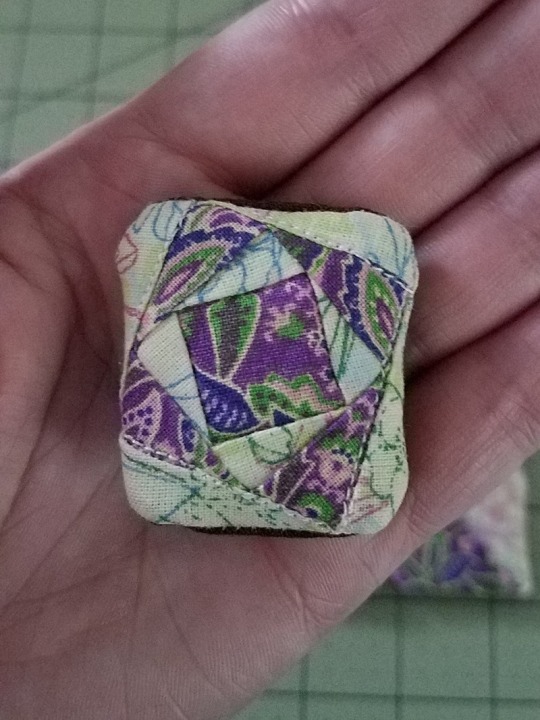
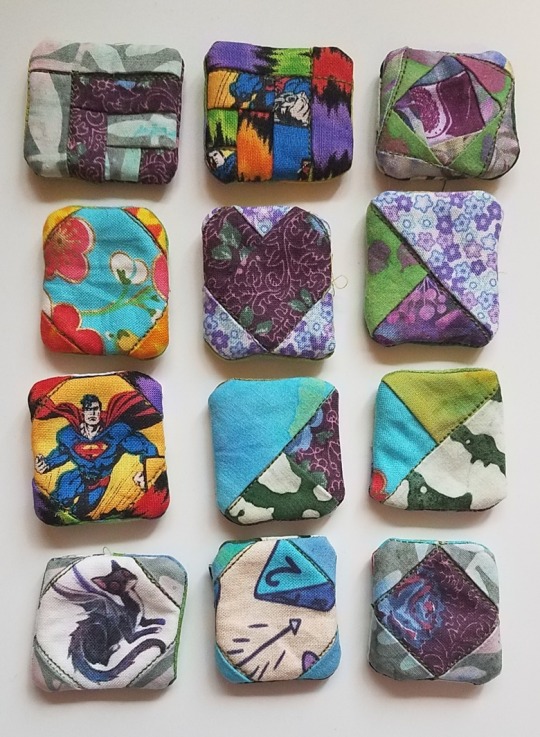
2. Pine tree wall hanging - The tree on the left, in pink, blue, and purple, full of pins and buttons, is mine. I have nearly all my decorative pins on it, and made it those colors because I can. The one on the left was a commission with "tree colored" in the description...so I used a print with trees in it. The client is very happy with it, and keeps it on display all year round. I highly recommend sewing the buttons on yourself, seeing as it will save you money, and you won't have to wait longer for the quilt to arrive.
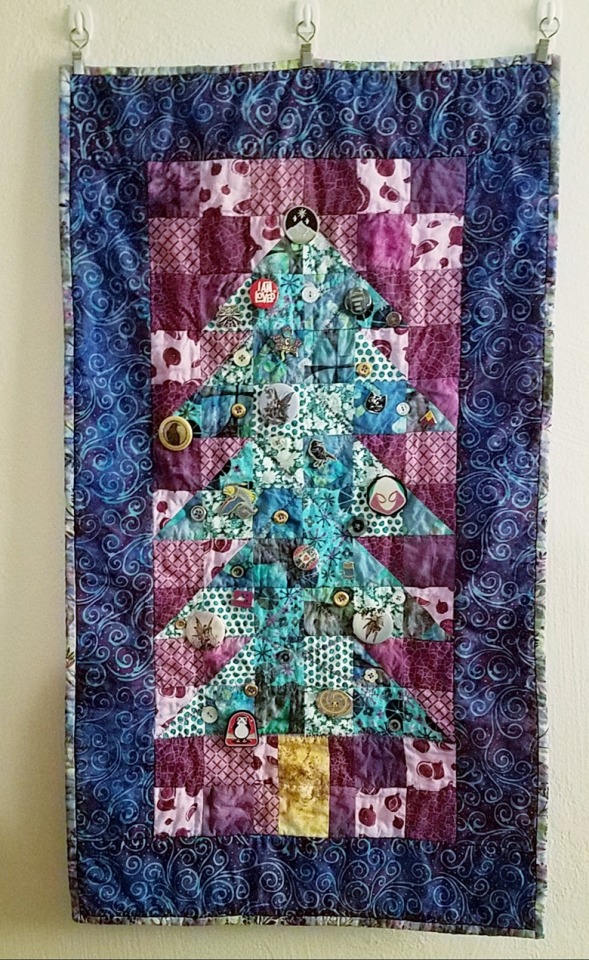

3. Rag quilt - this is the front and backing, with the front being the fluffy side. You must dry this on its own because of the fraying effect. I made the mistake of leaving a small towel in with the blanket. There is no removing all those strings. Ever. Another note, these will take more time to dry simply because of all the layers. The one I made for myself is made using quilting cotton and requires a round on hot in the dryer, hang it for about an hour, then I toss it in again. That gets it dry rather well.


If you're outside the US, or in an area within the US that deals with a lot of weather, keep that in mind. From the US to the UK, it's usually around two weeks, most of the EU two to three weeks, Brazil two months. Even ordering rush delivery will not guarantee arrival before the end of the year. The longest anything took to ship from my location was eight months, from Oregon to South Africa.
#artists on tumblr#commissions info#open commissions#holiday gifts#holiday shopping#holiday decorations
11 notes
·
View notes
Text
September 12 2024 2009
Finally high time we perform alchemy in this house. And to do that we need dowels.
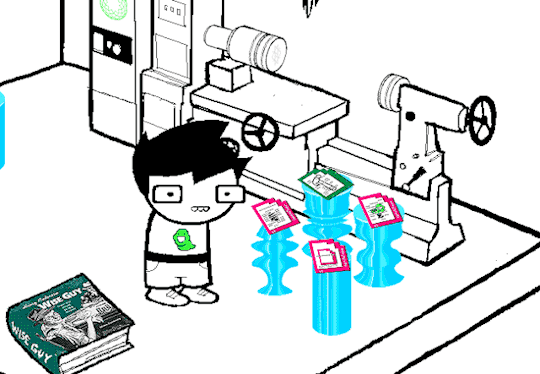
The captchalouge card dowel looks unchanged but it has been slightly shaved smaller. The shaving cream does not populate a knowable item right off the bat, most likely because the code isnt valid. Not saying you cant make whatever it is, its just not something SBURB planned on creating. Each item also comes with a different grist cost so far consisting of only shale and build grist. The more complex an item the more it costs. The hammer is 2 build grist while the pogo ride is 5 build grist and 1 shale. This means theres potential to make some very expensive items, a car for example.
First order of business is getting John more cards for his sylladex. Surprisingly these items, like the generic cube, form actual physical objects. No more cool glowing trees. Next order of business, test out all the cards.

That mystery card? Very nearly makes a functional rocket pack. Who owns a rocket pack and what do we have to change to get John his own. He would be such a menace with the ability to fly I just know it. Using the power of sweet catches and learned knowledge John no longer has to suffer the sylladex of dumbasses, at least.
In any case, reading Wise Guy gave John a revelation. Combine two punched cards in the lathe.
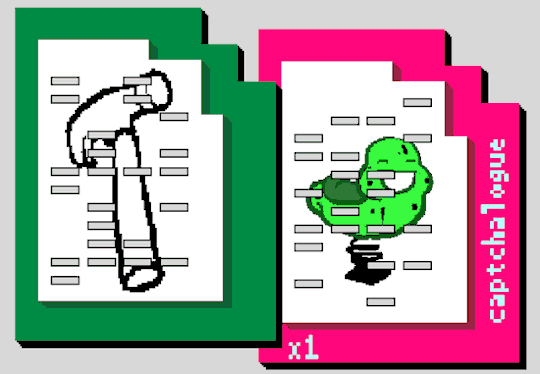
And for 10 build 16 shale...

You got the POGO HAMMER.
Our minds have been opened to the possibilities.
Fun facts about punched cards, the first punched cards were actually used with looms to create weave patterns. This was expanded upon and used on Harmoniums to create music, those cool self playing pianos.. It wasnt until the early 20th century that they were used for inputing data and computer programs on early computers. Imagine a stack maybe four or five inches thick for a single computer program.*
Im still trying to breakdown the captcha codes to punch card science. Best I can tell for now is that the captcha itself uses a hexidecimal variant (perhaps base64?) but translating that to a punch card system of 4 columns 12 rows is nebulous at best, at least if you follow diagrams of actual punch cards.
*edit: how did i manage to forget the rest of this sentence smh
18 notes
·
View notes
Photo

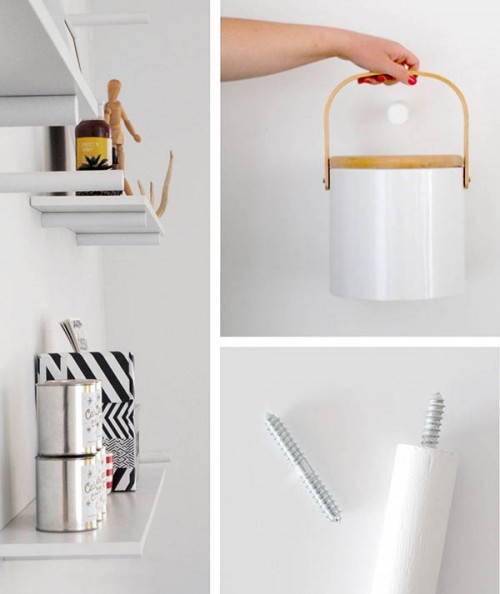

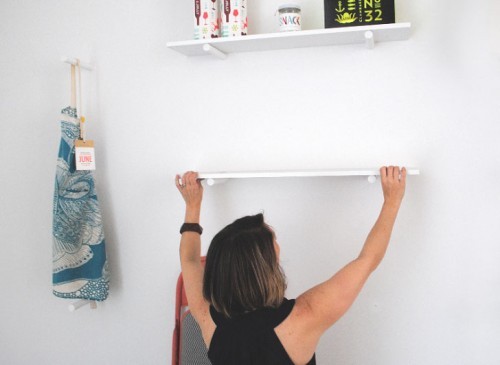
DIY Peg Wall by Christine Wisnieski:
When I moved into my studio fifteen months ago, I knew I wanted to create a feature wall near the entryway that felt curated, functional and peppered with color. It’s a place where I’d greet clients and a space to display my work and objects I’ve collected. While I would have loved to contract a carpenter to build out a drop-dead shelving system like this, it was simply not in my budget. So, out of necessity, I came up with a solution that was pocketbook friendly, doable with limited tools and offered flexibility.
The solution was inspired by the old pegboard system we were tasked with climbing in grade school physical education class, except this one would not require climbing. We used wood dowels and double-sided screws to create the pegs. The shelves we picked up at the local hardware store. Filled with some art and a few of my favorite objects, this project made a big step forward in shaping up our entryway. Not to mention, it created a perfect spot to drop your coat on your way in! To see more of the studio space, stop by my Instagram feed and say hello. –Christine Wisnieski
Here’s what you’ll need:
For Planning -stud finder -tape measure -level
For Shelf System
-1″ diameter hardwood dowel rods (cut into 7 1/2″ pegs) -shelves (four 8″ x 36″, one 8″ x 48″) -5/16″ x 2 1/2″ dowel screws (1 per peg)
General Supplies
-drill -saw -sandpaper -vice -pliers -drop-cloth -all-purpose paint brush -white paint (we used leftover latex paint from our walls) *lathe
Steps:
Determine your shelving plan
First, sketch out your shelving plan. My wall is 12′ tall x 14 1/2′ wide and features 24 pegs. Pegs are spaced 24″ horizontally (2′ in from the adjacent walls) and 20″ apart vertically (starting 4′ from the floor). For extra support, I placed pegs on studs.
Measure out design
Following your plan, use pencil, stud finder, tape measure and level to grid out your peg positions onto the wall. I found a laser level to be a helpful tool.
Trim down dowels
Using a saw, trim dowels into pegs 7 1/2″ long (…or ask the folks at your local hardware store to assist you with this). Sand any rough edges left from cutting.
Prep pegs
Next, drill a 1 1/4″ hole into the center of each peg to hold screw. The most accurate way to do this is by using a wood lathe. If that’s not an option, simply find the center of the 1″ dowel, secure rod in vice and drill a 1 1/4″ deep hole. Once holes are drilled, insert screw into dowel using pliers.
Paint pegs
Wipe each peg with a damp towel to remove any dust. Using an all-purpose brush, paint all sides white. Tip: For drying, we found it easiest to tie each peg up using a piece of string and hang from an extra dowel.
Install shelf system
Next, drill holes into marked wall to hold pegs. Once drilled, screw pegs into position by hand and arrange shelves into desired configuration.
Style
There are endless configuration options–objects can be placed on shelves, hung from shelves and shelves can even be stacked.
3 notes
·
View notes
Photo

Antique Hand Tool Steel Barn Beam Fence Post Tiber Wood Auger Peg Drill Variable
T-handle auger or timber auger. Based on its size and construction, this particular example looks like it was used for boring large holes in wood, typically in log cabin building, timber framing, or post-and-beam construction.
Key Features:
T-handle: Wooden cross handle for two-handed torque
Spiral bit: Very large, screw-tip auger bit for starting and boring into hardwood
Heavy-duty forged iron collar: Unusual wide design, adding extra leverage and strength
Marking: Faintly visible “THE BEST” stamped on the handle — that was a common brand slogan used by several U.S. toolmakers in the late 1800s to early 1900s
Ready for that homestead, for off the gird, analog / manual labor and reliability.
Approximate Era:
Late 1800s to early 1900s
Typical Uses:
Boring holes in logs for pegs, dowels, or timber framing
Fence post or barn beam work
Possibly for well cribbing or early construction in rural/homestead settings
This is a large antique hand auger with a wooden T-handle and heavy-duty forged steel bit. Used for boring holes in timber, this piece likely dates to the late 19th or early 20th century and was used in traditional log cabin or timber frame construction. The auger has a wide spiral screw bit and a tapered shaft. Handle is stamped "THE BEST," a slogan used by several American toolmakers during the 1800s.
Wooden Handle is 10" W
Overall she's 13" T
The spiral section is approximately 2 3/8" L
Overall the drilling area has a total possible depth of 9" L
The bore shaft section starts out about 1.19" in diameter and tapers all the way up to 2" ( I measured the circumference via soft tape measure, and did the math for accuracy sake).
Overall she's well crafted, solid, and ready for another lifetime of service; Please note the tiny chip, mid-bore, the the leading edge (see thumb point pic).
Hand-forged steel and solid wood
Rustic patina and authentic wear
A rare, functional survivor of early American craftsmanship
Great for display in a vintage tool collection, historical reenactment, or use in traditional woodworking.
0 notes
Text
Turning Lead Into Gold Into A Rocket Pack
(page 615-626)
9/9/2009 Wheel Spin: Character Switch Verdict: John Turns Into Problem Sleuth
9/10/2009 Wheel Spin: Parent Bad :( Verdict: Parent Kidnapped By Imps :( :( :(

There’s a fucking ROCKET PACK in this game. A blasting off, cool flame decals, doing loops around the moon rocket pack. This is an absolute game changer (if Rose and John can get it working) cause it’s kinda hard to be stuck at home when you have one of those bad boys.
But before that, John makes a sweet fort! It’s pretty good structurally, and mirrors Dave making a fort nine pages earlier (less good, but in fairness, he didn’t have sheets or dowels to work with). I remember that characters making forts and disappearing into their imaginations was a recurring feature in Problem Sleuth. It’s sweet that John and Dave are doing this at almost the same moment without consulting each other, both sharing a similar childlike whimsy while so far apart.
Not so for Rose Lalonde, who has abandoned all silliness and fun that allowed her to wear a W as a mustache, who destroys John’s fort and throws his whole dresser into the void. How’s he gonna get clean socks now?? I get that she’s in a scary situation and is trying to take control any way she can, but this disregard for John’s few possessions has gotta stop. I noticed recently that his magic chest is STILL on the roof. And it’s not like his situation is much better than hers – I say that if John wants to take a moment to enjoy a fort break, he’s earned it.
Following the fort interlude, John carves totems from a bunch of cruxite dowels. The different shapes of the totems are really fun to look at, and remind me a lot of vinyl records, with their various bumps and notches etched into the record’s groove that then turn into music when a needle (or in the alchemiter’s case, a laser) moves over it. It’s also notable that the totem that eventually becomes the rocket pack has the most mass removed from it, possibly because it has to code for four items instead of just one.
And with that, we FINALLY get started on punch card alchemy! It’s real, Rose was right when she hypothesized this back on p.157 (!!) and the possibilities are insane. The process functions very similarly to the apple from the pre-punched card – use the card on the totem lathe to carve a cruxite dowel unique to that punch code, then use the alchemiter to ‘read’ the totem with its laser and spend the required grist to create the corresponding item. When the holes are punched into a card containing the corresponding item, this object immediately shows up in the Atheneum (p.189, 620) – which is a benefit of punching the ‘right’ card, as even though you lose the original item, you get the cost information up front. When punching a card with a code for something it doesn’t contain, it’s entered as a question mark, and the grist needs to be expended to see the item.
One difference to the pre-punched card is that these codes/totems only contain the item itself, not its precursor. The apple grew from a tree with us seeing its whole creation, suggesting that the pre-punched card had extra information in its code, for an apple + tree combination. Speaking of which, I wonder if John still has the pre-punched card’s totem. It doesn’t appear in the Atheneum, so I wonder what would happen if he tried to use it again.
Rose creates a bunch of new captchalogue cards, ending the reign of the two-card sylladex (inventory of dumbasses) and pioneering the brand new two hundred card syladex (inventory of a different kind of dumbass if you’re using stack or queue). She makes a hammer and then a bouncing Slimer pogo ride, and as soon as the pogo appears, a couple imps jump up to the platform and one bounces off with it. I love this moment. The imps’ sense of harlequin mischief simply cannot be overcome.
Back to the most important thing here, the ROCKET PACK. It’s sadly inoperable, due to containing a violin (something we’ve seen in Rose’s room), a cinderblock (something that’s all over Dave’s house) and a flowerpot (something that fits pretty neatly with gardenGnostic’s chumhandle). So, a new theory: Sburb has somehow pre-indexed the houses of people who will play the game. Beta testers had to provide an address to send the discs to, so Skaianet knows which houses might play. GG has been signed up as a beta tester without their knowledge, either by a family member, or possibly by Rose.
In Sburb, the base items that can be created via alchemy are limited to 1. all items contained within players’ homes, and 2. Sburb-critical items pre-programmed by the game that will prove necessary for gameplay. These include the pre-punched card and the rocket pack – given John’s precarious location, it makes sense that flying would be a game mechanic. These Sburb-critical items probably have pre-punched cards of their own as unlockable rewards, or their codes can be learned from solving in-game puzzles.
We've only seen a few captchalogue codes so far, but they've all been alphanumeric, allowing both upper and lower case letters. While it's possible that future codes could include special characters or even wild card characters, the total number of 8-digit codes (from a set of 62 characters, order matters, characters can repeat) is over 218 trillion - specifically, 218,340,105,584,896. That's a LOT of possibilities.
From the base items, codes can be mixed in various combinations. This is where the creative aspect comes in. Some of these will be useless – like the rocket pack jammed with unrelated debris – but some will improve on their components and make something really cool. For example, John could combine a hammer with a piano and make a beautiful blunt weapon that plays Showtime whenever it bonks an imp on the head. That’s the dream.
#homestuck#reaction#im so excited about alchemy we are SO BACK the possibilities are literally earth shattering#chrono
35 notes
·
View notes
Text
How Wellness Retreats in Rishikesh Integrate Somatic Healing and Ayurveda

Wellness retreats in Rishikesh are steadily evolving beyond yoga and meditation, offering a more layered, transformative experience. Within the first few days at a healing retreat in Rishikesh or any wellness retreat near Rishikesh, visitors encounter therapies rooted in body-focused science and ancient Indian medicinal systems that align structural well-being with emotional regulation.
The Hidden Engineering of Human Recovery
Somatic healing works like structural retrofitting—strengthening what's already built by addressing unnoticed stress fractures. It draws from neurobiology and trauma-informed science, helping participants access deep muscle memory and nervous system patterns. At healing retreats in Rishikesh, somatic protocols often resemble re-calibration techniques used in structural engineering—measured, intentional, and non-invasive, yet profoundly impactful.
Ayurveda as the Biological Maintenance System
While somatic healing fine-tunes the nervous system, Ayurveda addresses the entire bodily infrastructure. Daily detox routines like Panchakarma, medicated oil therapies, and tailored herbal plans function similarly to preventative maintenance schedules in infrastructure management. A wellness retreat near Rishikesh often begins with Nadi Pariksha—a diagnostic method assessing bio energies—allowing for customized treatment flows that stabilize the body’s foundation, much like reinforcing materials based on soil reports.
Movement as Micro-adjustment
Movement-based therapies such as Katichakrasana, Somatic Yoga, and Myofascial Release serve as the dynamic joints in the healing structure. Just as expansion joints in concrete allow for controlled flexibility, these practices grant the body space to adjust, recalibrate, and redistribute tension. Healing retreats in Rishikesh incorporate such techniques to rewire chronic stress loops embedded within the muscular and skeletal systems.
Integrated Systems Yield Sustainable Wellness
Much like sustainable building projects rely on synergy between structural integrity, materials, and systems, wellness retreats in Rishikesh combine disciplines to build resilience. Somatic sessions often precede Ayurvedic detox, ensuring that physical release prepares the body to absorb herbal remedies. Breathing practices follow physical treatments, much like aeration improves concrete setting—each step builds upon the last for long-term results.
Personalization Based on Structural Feedback
No two buildings react the same way to load-bearing stress, and neither do bodies. At a wellness retreat near Rishikesh, practitioners continuously monitor guests’ progress through prakriti (constitution) assessments and somatic feedback. Protocols adapt in real-time, just as engineering teams adjust material application based on live-site analysis.
Why Civil Engineers Are Observing Wellness Protocols
The crossover between wellness science and infrastructure engineering is gaining traction. Just as a bar dowel transfers load and maintains structural continuity across concrete joints, somatic healing and Ayurveda create neuro-muscular continuity across emotional trauma and physical stress. Decision-makers in civil and structural sectors have begun drawing parallels between human wellness systems and high-resilience materials science.
Selecting the Right Retreat is Like Choosing the Right Reinforcement System
Not all wellness retreats in Rishikesh deliver the same integrity. Just as the wrong binding wire can compromise a reinforced slab, choosing a retreat lacking licensed Ayurvedic doctors or trauma-informed somatic therapists may dilute results. Checking lineage, certification, and integration between practices is vital—engineers wouldn’t risk low-tensile dowels; neither should anyone seeking authentic healing.
Conclusion: When Structure and Soul Align
Healing, when approached scientifically and systematically, goes beyond relaxation. The blend of somatic healing and Ayurveda, as seen in many healing retreats in Rishikesh, creates a multi-layered reinforcement strategy—one that heals, restores, and fortifies. A well-selected wellness retreat near Rishikesh becomes more than a destination; it becomes a restoration site for the body’s core framework.
FAQs
1. How is somatic healing different from yoga? Somatic healing focuses on nervous system regulation and trauma release through micro-movements and body awareness rather than stretching or postures.
2. What is the role of Ayurveda in modern wellness retreats? Ayurveda customizes internal detox, nutrition, and herbal therapies to support systemic healing, much like a structural analysis leads to targeted reinforcement.
3. Can engineers or contractors benefit from these retreats? Yes. These programs offer physical recovery, stress recalibration, and structured systems thinking, which parallel engineering workflows.
#Ayurveda retreats Rishikesh#Somatic healing yoga#Rishikesh wellness escape#Ayurvedic detox retreat#Yoga therapy Himalayas#Holistic healing India#Stress relief Rishikesh#Mind-body balance retreat#Ayurveda somatic fusion#Panchakarma Rishikesh#Yoga for trauma release#Rejuvenate in Rishikesh#Ayurvedic massage retreat#Emotional healing yoga#Rishikesh detox programs#Somatic therapy India#Ayurvedic sleep retreat#Yoga for deep healing#Rishikesh wellness rituals#Ayurvedic mind cleanse
0 notes